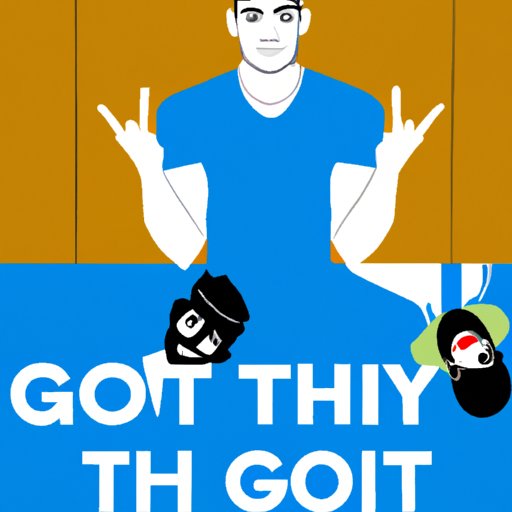Introduction
The phrase ‘that guy’ has become a common way to describe someone who acts in an inappropriate, boorish, or obnoxious manner. This type of behavior can have a negative effect on relationships and social situations, making it important to understand why people act this way and what can be done about it. In this article, we will explore the concept of being ‘that guy’ and its impact on social settings.
What it Means to be ‘That Guy’
Being ‘that guy’ can mean different things depending on the context. Generally, it is used to refer to someone who is seen as annoying, rude, or inconsiderate. For example, ‘that guy’ might be the one who talks too much or monopolizes conversations. They may be the one who always has to be right or who tries to show off their knowledge. They could also be seen as arrogant or overly opinionated.
When it comes to personal relationships, being ‘that guy’ can have a significant impact. It can lead to tension and conflict, as well as feelings of resentment and frustration. People may begin to avoid the ‘that guy’, as they find them difficult to be around. In some cases, ‘that guy’ behavior can even push people away, leading to strained or broken relationships.
Psychology Behind ‘That Guy’ Behaviors
Before we can understand why people become ‘that guy’, it is important to consider the pros and cons of this behavior. On the one hand, it can make the person feel more powerful or respected in a group setting. They may also get a sense of satisfaction from knowing that they are the center of attention. On the other hand, ‘that guy’ behavior can be damaging to relationships and social situations. It can lead to feelings of anger, resentment, and even contempt.
With this in mind, it is possible to begin to look at the psychology behind ‘that guy’ behaviors. It is likely that these actions stem from underlying insecurities and a need for validation. The ‘that guy’ may be trying to compensate for feelings of worthlessness or inadequacy, or they may be seeking attention and approval from others. Whatever the reason, it is important to recognize that this type of behavior is ultimately unhelpful and can lead to further problems.
Examples of ‘That Guy’ in Pop Culture
The ‘that guy’ archetype can be found in many forms of media, including television shows, movies, and books. Popular characters such as Ross Geller from Friends and Dwight Schrute from The Office embody this trope. Both characters often come across as arrogant, condescending, and annoying to those around them, although they are usually well-meaning. Other examples include Alan from The Hangover and Sheldon Cooper from The Big Bang Theory.
These characters provide an insight into how ‘that guy’ behavior is portrayed in popular culture. They often serve as comic relief and are used to drive storylines forward. However, it is important to remember that this type of behavior can have serious consequences in real life. It can lead to damaged relationships and hurt feelings, which is why it is important to be aware of how our actions affect those around us.
Conclusion
In conclusion, ‘that guy’ behavior can have a detrimental effect on relationships and social settings. It is important to understand the psychology behind this type of behavior and recognize that it often stems from underlying insecurities. We can also look to popular culture to see how ‘that guy’ is represented in various forms of media. Ultimately, it is up to each individual to be mindful of their actions and ensure that they are not causing harm to those around them.
(Note: Is this article not meeting your expectations? Do you have knowledge or insights to share? Unlock new opportunities and expand your reach by joining our authors team. Click Registration to join us and share your expertise with our readers.)
